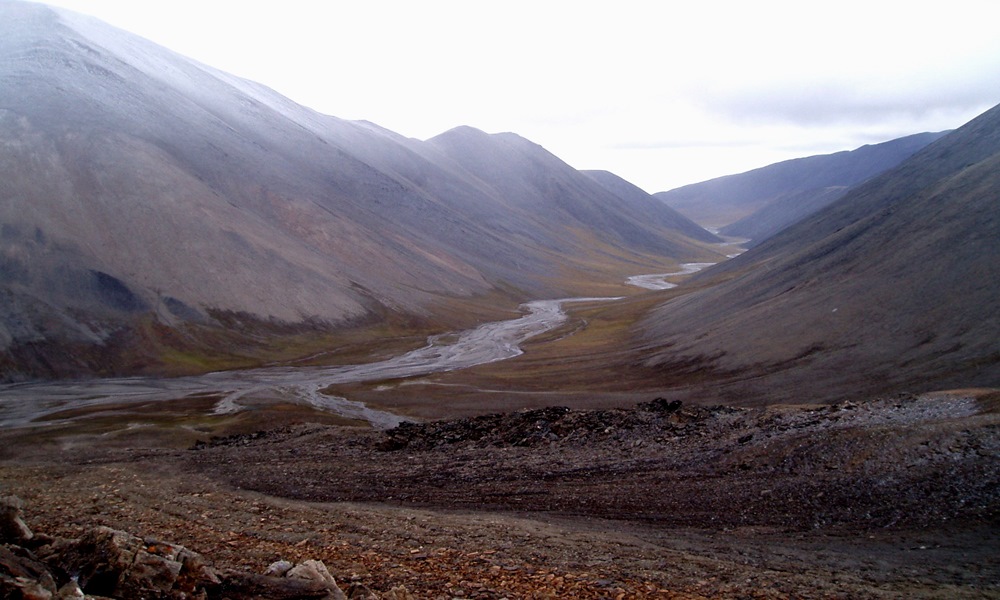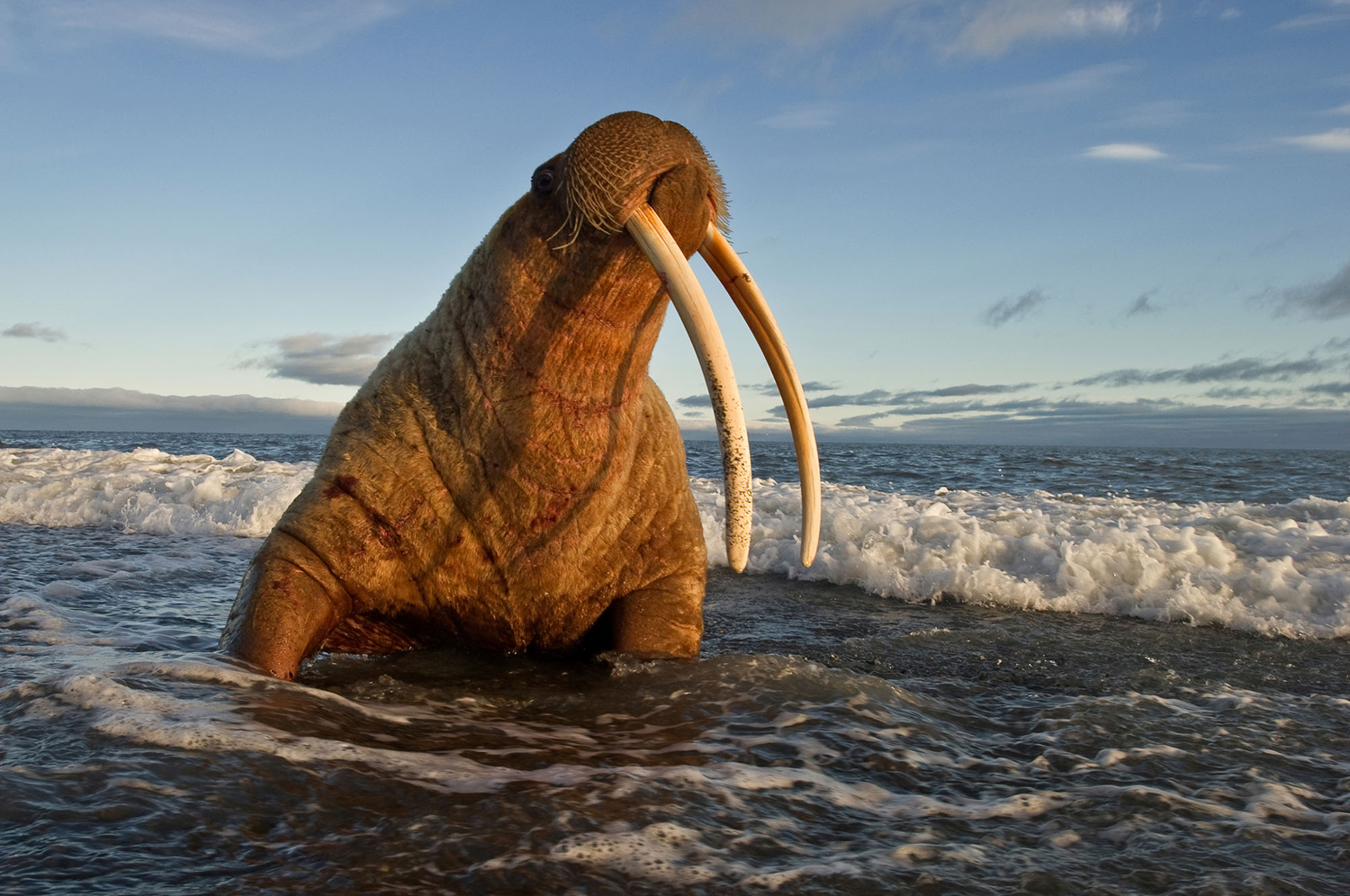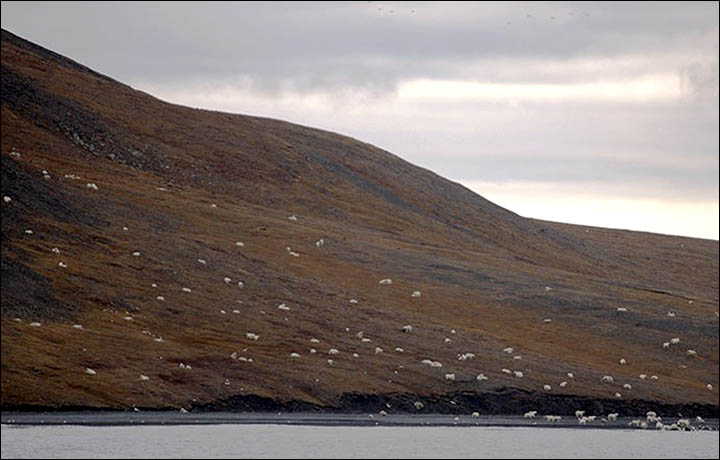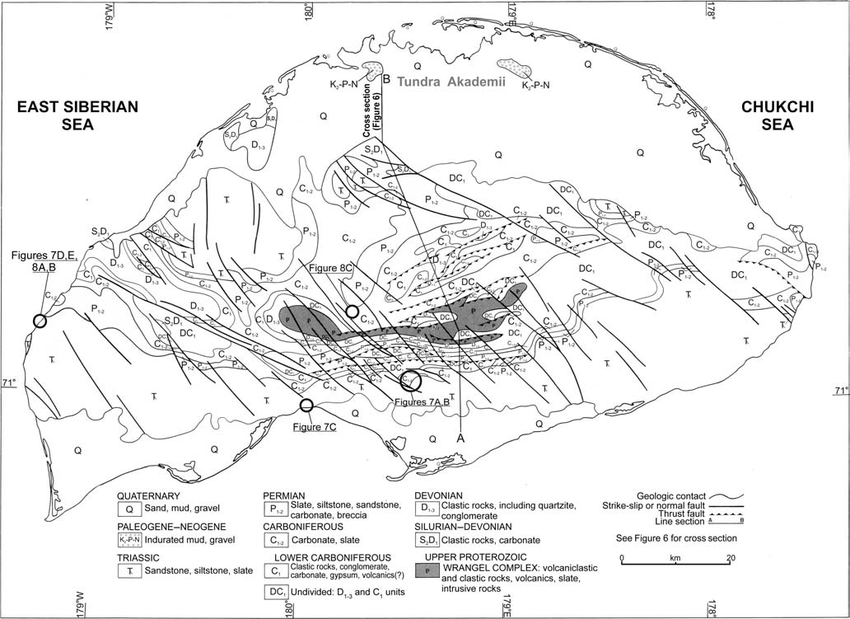
In the Arctic Sea, between the tip of Siberia and outstretched Alaska, is Wrangel Island.
Остров Врангеля - это место с глубокой историей флоры и фауны. Это родина Чукчей.
Остров является местом размножения белых медведей, тюленей, моржей и леммингов. Птицы, лисы и киты также посещают. The island is the home of the last known mammoth populations, who survived there until 2000BC.







The unglaciated island belongs to the Chukotka Autonomous Okrug of the Russian Federation. The 7600 square km island is the visible echo of ancient folded, faulted, and metamorphosed volcanic, intrusive, and sedimentary rocks.
To the island’s south is the South Chukchi Basin, a continuation of the Hope Basin from Alaska. This basin is filled with sedimentation from the beginning of the Aptian-Albian-Late Cretaceous. At times the sediment reaches 6km thick.
The Wrangel-Herald arch is a north-eastward convex bend that was segmented by longitudinal faults. Folds, revse and thurst faults, pop-up and positive flower structures are features of this highly stressed geological development.
The age of this geology enabled a long history.
В древние времена у чукчей был вождь по имени Крачай, который путешествовал по льду вслед за северным оленем. Когда казаки нашли остров в 1764 году, прибыло много экспедиций, несмотря на опасные льды.
The island is a заповедни, a protected nature. Between 4 and 12 rangers and scientists live on the island.